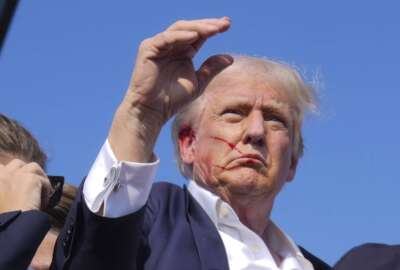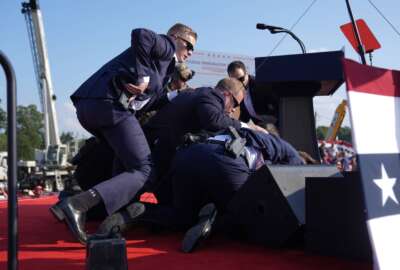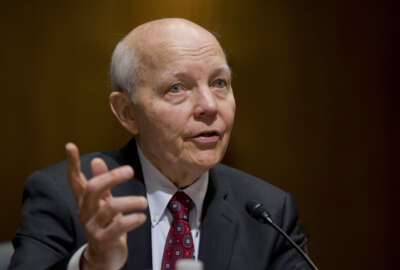Secret Service Director Cheatle likely can’t hang on
Secret Service is like a Navy ship that's run aground. The commander may not have had his or her hand on the wheel, but that's where responsibility rests.
Americans, and indeed everyone around the world, have witnessed two lurid dramas in the past week. The shooting incident in Butler Township, Pennsylvania came first. That gave way to an unfunny Keystone Kops spectacle of blame-fixing. It descended into Secret Service Director Kimberly Cheatle heckled by GOP senators as she made her way through the convention site in Milwaukee.
Predictable calls have emerged for Cheatle to resign. The true course of action isn’t so obvious, though. I mean “true” in the sense of manifest or straight. She took ultimate responsibility in a TV interview, but then the Secret Service sort of bumbled the PR by seeming to blame the local police on hand at the Trump rally. After this came a string of revelations about how the shooter was in plain sight, was found to have a rangefinder, generally aroused suspicion, and yet somehow to hide himself until too late.
If Cheatle should step down — and she probably will have to — I’d say her departure would come under the “that’s the way it is” category. It won’t come because she’s a terrible person or acted nefariously. She didn’t personally commit the planning and protective lapses, so far as we know. Nor was she caught stealing or harassing employees or such. By all accounts I’ve read, Cheatle is an earnest law enforcement person with long personal experience in presidential protection.
The Secret Service itself has had issues. The object of more or less continual critique, it ranks 413 out of 459 component agencies in the Best Places to Work in the Federal Government for 2023. It’s experienced its share of scandals over the years, but not since Cheatle returned as director. The agency has many functions, but its most visible — official protection — is also the most difficult and carries the highest stakes.
This situation is more like a Navy ship commander who runs aground while under the guidance of a harbor pilot. Grounding a warship often, but not axiomatically, means the skipper takes the fall. Officers know and accept that when they move up to O-5 grade.
I checked in with retired Navy Captain Bill Toti, who built a successful post-naval career as a consultant and author. He told me, in a ship accident “the default is that the CO will be sacked.” He added that the Navy conducts investigations to see if a chart was wrong, whether the crew took prudent precautions, or whether something made the situation beyond control.
“Normally these extenuating circumstances don’t exist,” Toti wrote in an email exchange, ” and it’s quickly determined to be crew error. In those cases, the CO will always be relieved for cause, because it was his/her responsibility to ensure the crew [is] properly trained and procedures properly followed.”
That’s the case here with the Secret Service. Only this case amounts to more than the equivalent of running aground. A grazing of Trump and the murder of a bystander equate to a near shipwreck. The incident evokes unpleasant national memories.
Yet we’ve seen, in the corporate world no less than in the federal, instances wherein terrible mistakes did not result in ouster or resignation of a top official. Boeing CEO David Calhoun came in after the previous CEO because of two crashes with many deaths. Then came the door that fell off a jet liner full of passengers. Calhoun didn’t personally leave the bolts off that plane, and company seems to face a new challenge weekly. Calhoun said months ago he’ll retire at the end of the year. At the FDIC, chairman Martin Gruenberg, overseeing a toxic work environment, said he’d leave, but only after the Senate confirms a successor. In other words, sometime after the next president is inaugurated.
I recall, it must be 40 years ago, a reporter at the Washington Post had to return a Pulitzer Prize because, if turned out, she’d fabricated the winning story. Her resume, it came out later, was mostly lies, too. The reporter resigned, but none of the editors who ignored obvious signs, resigned or were fired.
Mistakes large and small occur in every organization because we humans are frail and imperfect. Therefore, magnitude and criticality of a failure also figure into whether the boss stays or leaves. For the Secret Service, failing to prevent a sniper, plainly visible in daylight, from getting a few rounds off and actually striking a high level protectee, well that’s nearly as bad as it can get. Now the Secret Service and the politicians have to decide whether Director Cheatle is part of the solution, or not.
My earliest memory fragment is New Year’s Eve 1960. The earliest event for which I have detailed memory took place November 22nd, 1963. As a third grader, I first heard the news on the walkway leading from Churchill Elementary School in Churchill Borough, Pennsylvania. But it’s a memory of witnessed emotion and low-resolution black-and-white. To this day, the only visual documentation of the President Kennedy assassination is the short piece of 8mm film taken by the late Abraham Zapruder (whose life is another story). Both the Kodachrome film and the Bell & Howell camera ended up stored at the National Archives and Records Administration.
The JFK assassination caused a revolution at the Secret Service, which at the time was behind the times. The attempt at former President Trump’s life looks more like a lack of adherence to known best practices and a breakdown in communications, and less like some emergent, heretofore unknown phenomenon.
Nearly Useless Factoid
The Secret Service employs approximately 3,200 special agents, 1,300 Uniformed Division officers, and more than 2,000 other technical, professional and administrative support personnel.
Source: The Secret Service
Copyright © 2025 Federal News Network. All rights reserved. This website is not intended for users located within the European Economic Area.
Tom Temin is host of the Federal Drive and has been providing insight on federal technology and management issues for more than 30 years.
Follow @tteminWFED







